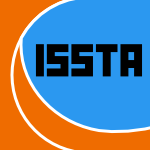77 papers:
 DHM-EH-2015-DoiKM #design #effectiveness
DHM-EH-2015-DoiKM #design #effectiveness- Effective Design of Traditional Japanese Tea Ceremony in a Group Home for the Elderly with Dementia (TD, NK, KM), pp. 413–422.
 DUXU-DD-2015-CamposBFNC #experience #guidelines #heuristic #industrial #multimodal
DUXU-DD-2015-CamposBFNC #experience #guidelines #heuristic #industrial #multimodal- Combining Principles of Experience, Traditional Heuristics and Industry Guidelines to Evaluate Multimodal Digital Artifacts (FC, RB, WF, EVN, WC), pp. 130–137.
 DUXU-UI-2015-JoyceLBJ #evaluation #heuristic #smarttech #usability
DUXU-UI-2015-JoyceLBJ #evaluation #heuristic #smarttech #usability- Smartphone Application Usability Evaluation: The Applicability of Traditional Heuristics (GJ, ML, TB, AJ), pp. 541–550.
 DUXU-UI-2015-ZhuSK #case study #design #smarttech
DUXU-UI-2015-ZhuSK #case study #design #smarttech- A Field Study on Basic Usage Patterns of Traditional Watch and Smart Phone for Designing Smart Watch (ZZ, HS, SWK), pp. 597–608.
 ICEIS-v3-2015-GhezziCRB #agile #approach #case study #comparative #design #mobile #performance
ICEIS-v3-2015-GhezziCRB #agile #approach #case study #comparative #design #mobile #performance- A Comparative Study on the Impact of Business Model Design & Lean Startup Approach versus Traditional Business Plan on Mobile Startups Performance (AG, AC, AR, RB), pp. 196–203.
 SAC-2015-RodriguesMSS #3d #education #game studies #interactive
SAC-2015-RodriguesMSS #3d #education #game studies #interactive- Beyond fun: an interactive and educational 3D traffic rules game controlled by non-traditional devices (MAFR, DVdM, YRS, YRS), pp. 239–246.
 ICST-2015-HemmatiFM #agile #testing
ICST-2015-HemmatiFM #agile #testing- Prioritizing Manual Test Cases in Traditional and Rapid Release Environments (HH, ZF, MVM), pp. 1–10.
 ITiCSE-2014-HortonCCGZ
ITiCSE-2014-HortonCCGZ- Comparing outcomes in inverted and traditional CS1 (DH, MC, JC, PG, DZ), pp. 261–266.
 CSCW-2014-Oeldorf-HirschHMTG #network #social
CSCW-2014-Oeldorf-HirschHMTG #network #social- To search or to ask: the routing of information needs between traditional search engines and social networks (AOH, BH, MRM, JT, DG), pp. 16–27.
 DHM-2014-OkaGTNH #analysis
DHM-2014-OkaGTNH #analysis- Motion Analysis of the Pounding Technique Used for the Second Lining in the Fabrication of Traditional Japanese Hanging Scrolls (YO, AG, YT, CN, HH), pp. 55–65.
 ICEIS-v1-2014-TimoteoVF #analysis #case study #dataset #network #project management
ICEIS-v1-2014-TimoteoVF #analysis #case study #dataset #network #project management- Evaluating Artificial Neural Networks and Traditional Approaches for Risk Analysis in Software Project Management — A Case Study with PERIL Dataset (CT, MV, SF), pp. 472–479.
 ICDAR-2013-GaoJY #case study #comparative #empirical #online #recognition
ICDAR-2013-GaoJY #case study #comparative #empirical #online #recognition- An Empirical Comparative Study of Online Handwriting Chinese Character Recognition: Simplified vs. Traditional (YG, LJ, WY), pp. 862–866.
 CHI-2013-FindlaterFFWD #difference #performance
CHI-2013-FindlaterFFWD #difference #performance- Age-related differences in performance with touchscreens compared to traditional mouse input (LF, JF, KF, JOW, TD), pp. 343–346.
 CHI-2013-Yarosh
CHI-2013-Yarosh- Shifting dynamics or breaking sacred traditions?: the role of technology in twelve-step fellowships (SY), pp. 3413–3422.
 CSCW-2013-RobsonHKP #network #social
CSCW-2013-RobsonHKP #network #social- Comparing the use of social networking and traditional media channels for promoting citizen science (CR, MAH, CK, JSP), pp. 1463–1468.
 HCI-IMT-2013-PelaezSC #collaboration #research #scalability
HCI-IMT-2013-PelaezSC #collaboration #research #scalability- Research on a Large Digital Desktop Integrated in a Traditional Environment for Informal Collaboration (MPP, RS, IC), pp. 348–357.
 HIMI-HSM-2013-JangOKK
HIMI-HSM-2013-JangOKK- User Guiding Information Supporting Application for Clinical Procedure in Traditional Medicine (HJ, YTO, AK, SKK), pp. 100–109.
 KDIR-KMIS-2013-ZhouNL #case study #collaboration #problem
KDIR-KMIS-2013-ZhouNL #case study #collaboration #problem- Mitigating Barriers to Patient-centred Knowledge Sharing — A Case-study of Knowledge Sharing Problems in the Collaboration of Traditional and Western Practitioners in Chinese Hospitals (LZ, MBN, WL), pp. 298–307.
 ITiCSE-2012-Assiter #effectiveness
ITiCSE-2012-Assiter #effectiveness- Introvert educators: techniques to be effective in the traditional face-to-face CS classroom (KVA), p. 381.
 ITiCSE-2012-GoldbergGLFH #education
ITiCSE-2012-GoldbergGLFH #education- Engaging computer science in traditional education: the ECSITE project (DG, DG, CHL, JAF, SH), pp. 351–356.
 CSCW-2012-BenfordTACR #design
CSCW-2012-BenfordTACR #design- Supporting traditional music-making: designing for situated discretion (SB, PT, AYA, AC, TR), pp. 127–136.
 ICSE-2012-Sprenger #case study #experience #how #industrial #re-engineering
ICSE-2012-Sprenger #case study #experience #how #industrial #re-engineering- How software engineering can benefit from traditional industries — A practical experience report (Invited industrial talk) (TS), p. 1000.
 ITiCSE-2011-SettleDD #difference #student
ITiCSE-2011-SettleDD #difference #student- Does lecture capture make a difference for students in traditional classrooms (AS, LD, MJD), pp. 78–82.
 WCRE-2011-YingM #refactoring
WCRE-2011-YingM #refactoring- Refactoring Traditional Forms into Ajax-enabled Forms (MY, JM), pp. 367–371.
 DUXU-v2-2011-BohmSW11a #adaptation #constraints #usability
DUXU-v2-2011-BohmSW11a #adaptation #constraints #usability- Customized Usability Engineering for a Solar Control Unit: Adapting Traditional Methods to Domain and Project Constraints (PB, TS, CW), pp. 109–117.
 HCI-UA-2011-Levis #communication #towards #using #women
HCI-UA-2011-Levis #communication #towards #using #women- Working toward Women’s Economic Empowerment: Using Information and Communication Technology in Developing Areas to Market Traditional Crafts (MSL), pp. 266–273.
 ICEIS-v4-2011-WangZLC #industrial #research
ICEIS-v4-2011-WangZLC #industrial #research- The Research of Supply Chain between Traditional and Electronic Publishing Industry (CW, RZ, DL, WC), pp. 678–684.
 ECIR-2011-ZhaoJWHLYL #modelling #topic #twitter #using
ECIR-2011-ZhaoJWHLYL #modelling #topic #twitter #using- Comparing Twitter and Traditional Media Using Topic Models (WXZ, JJ, JW, JH, EPL, HY, XL), pp. 338–349.
 HPCA-2011-OuyangNWFP
HPCA-2011-OuyangNWFP- Beyond block I/O: Rethinking traditional storage primitives (XO, DWN, RW, DF, DKP), pp. 301–311.
 ASE-2009-LemonRMPDCPPLP #agile #development #simulation
ASE-2009-LemonRMPDCPPLP #agile #development #simulation- Applications of Simulation and AI Search: Assessing the Relative Merits of Agile vs Traditional Software Development (BL, AR, TM, JP, JD, RC, TP, FP, HL, DP), pp. 580–584.
 CHI-2009-KamMKC #case study #design #game studies
CHI-2009-KamMKC #case study #design #game studies- Designing digital games for rural children: a study of traditional village games in India (MK, AM, AK, JFC), pp. 31–40.
 CIKM-2009-ShiWY #framework #named #recommendation #semantics
CIKM-2009-ShiWY #framework #named #recommendation #semantics- Msuggest: a semantic recommender framework for traditional chinese medicine book search engine (SS, BW, YY), pp. 533–542.
 CSMR-2008-MarchettoRT #empirical #maintenance #web
CSMR-2008-MarchettoRT #empirical #maintenance #web- Comparing “Traditional” and Web Specific Fit Tables in Maintenance Tasks: A Preliminary Empirical Study (AM, FR, MT), pp. 284–288.
 ICSM-2008-JaszBGR #dependence
ICSM-2008-JaszBGR #dependence- Static Execute After/Before as a replacement of traditional software dependencies (JJ, ÁB, TG, VR), pp. 137–146.
 CHI-2008-EverettGBWDST #performance
CHI-2008-EverettGBWDST #performance- Electronic voting machines versus traditional methods: improved preference, similar performance (SPE, KKG, MDB, DSW, KD, DS, TT), pp. 883–892.
 ICEIS-HCI-2008-MileyRM #learning
ICEIS-HCI-2008-MileyRM #learning- Traditional Learning Vs. e-LEARNING — Some Results from Training Call Centre Personnel (MM, JAR, CM), pp. 299–307.
 ECIR-2008-KrauseHS #comparison #social
ECIR-2008-KrauseHS #comparison #social- A Comparison of Social Bookmarking with Traditional Search (BK, AH, GS), pp. 101–113.
 SEKE-2008-HittleG #fault #file system #injection #testing #using
SEKE-2008-HittleG #fault #file system #injection #testing #using- Fault Injection Testing of User-space File Systems Using Traditional and Aspect-based Techniques (JH, SG), pp. 873–876.
 SEKE-2008-LucasSM #classification #personalisation #recommendation #towards
SEKE-2008-LucasSM #classification #personalisation #recommendation #towards- Comparing the Use of Traditional and Associative Classifiers towards Personalized Recommendations (JPL, SS, MNMG), pp. 607–612.
 SAC-2008-PereiraAGS #architecture #configuration management #hybrid #using
SAC-2008-PereiraAGS #architecture #configuration management #hybrid #using- Using traditional loop unrolling to fit application on a new hybrid reconfigurable architecture (MMP, SRFdA, BCdO, ISS), pp. 1552–1553.
 CASE-2007-SomesBN #automation
CASE-2007-SomesBN #automation- Overcoming Traditional Automation Limitations Through Compliant Control and Contact Sensing (SDS, DJB, WSN), pp. 295–299.
 HCI-AS-2007-LiuKL #approach #learning
HCI-AS-2007-LiuKL #approach #learning- Breaking the Traditional E-Learning Mould: Support for the Learning Preference Approach (FL, JK, LL), pp. 294–301.
 HCI-IDU-2007-NingT #functional #how #order #usability
HCI-IDU-2007-NingT #functional #how #order #usability- How to Use Emotional Usability to Make the Product Serves a Need Beyond the Traditional Functional Objective to Satisfy the Emotion Needs of the User in Order to Improve the Product Differentiator — Focus on Home Appliance Product (LN, ST), pp. 587–593.
 HCI-IPT-2007-ChiCLC #design #interactive
HCI-IPT-2007-ChiCLC #design #interactive- Designing Smart Living Objects — Enhancing vs. Distracting Traditional Human-Object Interaction (PYC, JhC, SyL, HHC), pp. 788–797.
 DATE-2006-AngioliniMCBR #layout
DATE-2006-AngioliniMCBR #layout- Contrasting a NoC and a traditional interconnect fabric with layout awareness (FA, PM, SC, LB, LR), pp. 124–129.
 ICPR-v3-2006-YoshimuraHM #comparison
ICPR-v3-2006-YoshimuraHM #comparison- Comparison of Structural Variables with Spatio-temporal Variables Concerning the Identifiability of Okuri Class and Player in Japanese Traditional Dancing (MY, KH, YM), pp. 308–311.
 CSEET-2005-Ellis #learning #online #re-engineering
CSEET-2005-Ellis #learning #online #re-engineering- Autonomous Learning in Online and Traditional Versions of a Software Engineering Course (HJCE), pp. 69–76.
 ITiCSE-2005-GellerS #c# #dot-net
ITiCSE-2005-GellerS #c# #dot-net- Traditional and more “exotic” .NET languages: VB .NET, J#, C# and SML .NET (VG, CS), p. 406.
 CHI-2005-BaudischCHE #named
CHI-2005-BaudischCHE #named- Snap-and-go: helping users align objects without the modality of traditional snapping (PB, EC, KH, AE), pp. 301–310.
 ICEIS-v4-2004-HislopE #analysis #education #online
ICEIS-v4-2004-HislopE #analysis #education #online- An Analysis of Variation in Teaching Effort Across Tasks in Online and Traditional Courses (GWH, HJCE), pp. 202–207.
 ECIR-2004-Wilks #anti #information management #information retrieval #representation
ECIR-2004-Wilks #anti #information management #information retrieval #representation- IR and AI: Traditions of Representation and Anti-representation in Information Processing (YW), pp. 12–26.
 HT-2003-Nelson
HT-2003-Nelson- Structure, tradition and possibility (THN), p. 1.
 ICEIS-v4-2003-XuW #bibliography #grid #knowledge base
ICEIS-v4-2003-XuW #bibliography #grid #knowledge base- A Survey of Knowledge Base Grid for Traditional Chinese Medicine (JX, ZW), pp. 136–142.
 CSEET-2002-DuleyM
CSEET-2002-DuleyM- Cutting Hacking: Breaking from Tradition (RD, SPM), pp. 224–233.
 ITiCSE-2002-ZupancicH
ITiCSE-2002-ZupancicH- Lecture recording and its use in a traditional university course (BZ, HH), pp. 24–28.
 CSEET-2001-MaleticHM #case study #experience #re-engineering
CSEET-2001-MaleticHM #case study #experience #re-engineering- Incorporating PSP into a Traditional Software Engineering Course: An Experience Report (JIM, AH, AM), pp. 89–97.
 CHI-2001-BorovoySGNKRK #community
CHI-2001-BorovoySGNKRK #community- Folk computing: revisiting oral tradition as a scaffold for co-present communities (RB, BS, TG, MN, BK, MR, JK), pp. 466–473.
 ICEIS-v2-2001-BurdenJM #web
ICEIS-v2-2001-BurdenJM #web- Adoption of the World Wide Web by Traditional Australian Media Organisations (DB, PJ, JM), pp. 1126–1132.
 CSEET-2000-DuleyM #education #student
CSEET-2000-DuleyM #education #student- Did We Really Teach That?: A Glimpse of Things Students (Don’t) Learn from Traditional CS1 (RD, SPM), pp. 237–245.
 WCRE-2000-TateishiW #case study #experience #maintenance #tool support
WCRE-2000-TateishiW #case study #experience #maintenance #tool support- Applying Traditional Unix Tools during Maintenance: An Experience Report (AT, AW), pp. 203–206.
 SIGIR-2000-DingC00a #query
SIGIR-2000-DingC00a #query- Beyond the traditional query operators (C(D, CHC), pp. 377–378.
 ITiCSE-1998-Ellis98a #multi #tutorial #web
ITiCSE-1998-Ellis98a #multi #tutorial #web- Use of multimedia and World Wide Web resources in a traditional lecture/tutorial environment (poster) (AE), p. 279.
 ICSM-1998-CherinkaOR #maintenance #off the shelf #programming #question #static analysis
ICSM-1998-CherinkaOR #maintenance #off the shelf #programming #question #static analysis- Maintaining a COTS Integrated Solution — Are Traditional Static Analysis Techniques Sufficient for this New Programming Methodology? (RC, CMO, JR), pp. 160–169.
 SAC-1998-JungW #automation #concept #development #integration #novel #tool support #towards #web
SAC-1998-JungW #automation #concept #development #integration #novel #tool support #towards #web- CASE for Web sites: towards an integration of traditional case concepts and novel development tools (RJ, RW), pp. 726–731.
 SAC-1998-SabinY #database #information retrieval
SAC-1998-SabinY #database #information retrieval- Integrating information retrieval techniques with traditional DB methods in a Web-based database browser (RES, TKY), pp. 760–766.
 ICPR-1996-OommenL #fault #pattern matching #pattern recognition #probability #recognition
ICPR-1996-OommenL #fault #pattern matching #pattern recognition #probability #recognition- Probabilistic syntactic pattern recognition for traditional and generalized transposition errors (BJO, RKSL), pp. 685–689.
 ISSTA-1996-SloaneH #slicing
ISSTA-1996-SloaneH #slicing- Beyond Traditional Program Slicing (AMS, JH), pp. 180–186.
 SIGMOD-1995-FaloutsosL #algorithm #dataset #multi #named #performance #visualisation
SIGMOD-1995-FaloutsosL #algorithm #dataset #multi #named #performance #visualisation- FastMap: A Fast Algorithm for Indexing, Data-Mining and Visualization of Traditional and Multimedia Datasets (CF, KIL), pp. 163–174.
 TRI-Ada-1993-SitaramanG #re-engineering #reuse
TRI-Ada-1993-SitaramanG #re-engineering #reuse- Software Reuse: A Context for Introducing Software Engineering Principles in a Traditional Computer Science Second Course (MS, JG), pp. 137–146.
 TOOLS-EUROPE-1993-LaurentS #approach #case study #industrial #object-oriented
TOOLS-EUROPE-1993-LaurentS #approach #case study #industrial #object-oriented- “Traditional” versus Object-Oriented Approach: a Case Study in an Industrial Environment (PL, NS), pp. 109–114.
 ICLP-1993-Gusikhin #integration #prolog #scheduling
ICLP-1993-Gusikhin #integration #prolog #scheduling- Integration of Traditional Scheduling Techniques and AI on Prolog Basis (OYG), p. 841.
 CHI-1992-KimL #composition #design #functional #logic #object-oriented #process #towards
CHI-1992-KimL #composition #design #functional #logic #object-oriented #process #towards- Towards a model of cognitive process in logical design: comparing object-oriented and traditional functional decomposition software methodologies (JK, FJL), pp. 489–498.
 SEKE-1992-Tervonen #quality #research #validation
SEKE-1992-Tervonen #quality #research #validation- Quality-Driven Validation: A Link Between Four Research Traditions (IT), pp. 370–377.
 SEKE-1990-StovskyW #design #re-engineering
SEKE-1990-StovskyW #design #re-engineering- The Role of Traditional Engineering Design Techniques in Software Engineering (MPS, BWW), pp. 84–89.
 HT-1987-Crane #hypermedia
HT-1987-Crane #hypermedia- From the Old to the New: Integrating Hypertext into Traditional Scholarship (GRC), pp. 51–55.
 HCI-CE-1987-Ruggles #design
HCI-CE-1987-Ruggles #design- Enhancing a Traditional Typeface Design Environment Through the Use of Contemporary Computing Technology (LR), pp. 481–488.
 SIGIR-1982-Henrichs #information retrieval #question #what
SIGIR-1982-Henrichs #information retrieval #question #what- The Growing Crisis of Traditional Information Retrieval Systems — What is to Follow? (NH), pp. 1–12.
 DHM-EH-2015-DoiKM #design #effectiveness
DHM-EH-2015-DoiKM #design #effectiveness DUXU-DD-2015-CamposBFNC #experience #guidelines #heuristic #industrial #multimodal
DUXU-DD-2015-CamposBFNC #experience #guidelines #heuristic #industrial #multimodal DUXU-UI-2015-JoyceLBJ #evaluation #heuristic #smarttech #usability
DUXU-UI-2015-JoyceLBJ #evaluation #heuristic #smarttech #usability DUXU-UI-2015-ZhuSK #case study #design #smarttech
DUXU-UI-2015-ZhuSK #case study #design #smarttech ICEIS-v3-2015-GhezziCRB #agile #approach #case study #comparative #design #mobile #performance
ICEIS-v3-2015-GhezziCRB #agile #approach #case study #comparative #design #mobile #performance SAC-2015-RodriguesMSS #3d #education #game studies #interactive
SAC-2015-RodriguesMSS #3d #education #game studies #interactive ICST-2015-HemmatiFM #agile #testing
ICST-2015-HemmatiFM #agile #testing ITiCSE-2014-HortonCCGZ
ITiCSE-2014-HortonCCGZ CSCW-2014-Oeldorf-HirschHMTG #network #social
CSCW-2014-Oeldorf-HirschHMTG #network #social DHM-2014-OkaGTNH #analysis
DHM-2014-OkaGTNH #analysis ICEIS-v1-2014-TimoteoVF #analysis #case study #dataset #network #project management
ICEIS-v1-2014-TimoteoVF #analysis #case study #dataset #network #project management ICDAR-2013-GaoJY #case study #comparative #empirical #online #recognition
ICDAR-2013-GaoJY #case study #comparative #empirical #online #recognition CHI-2013-FindlaterFFWD #difference #performance
CHI-2013-FindlaterFFWD #difference #performance CHI-2013-Yarosh
CHI-2013-Yarosh CSCW-2013-RobsonHKP #network #social
CSCW-2013-RobsonHKP #network #social HCI-IMT-2013-PelaezSC #collaboration #research #scalability
HCI-IMT-2013-PelaezSC #collaboration #research #scalability HIMI-HSM-2013-JangOKK
HIMI-HSM-2013-JangOKK KDIR-KMIS-2013-ZhouNL #case study #collaboration #problem
KDIR-KMIS-2013-ZhouNL #case study #collaboration #problem ITiCSE-2012-Assiter #effectiveness
ITiCSE-2012-Assiter #effectiveness ITiCSE-2012-GoldbergGLFH #education
ITiCSE-2012-GoldbergGLFH #education CSCW-2012-BenfordTACR #design
CSCW-2012-BenfordTACR #design ICSE-2012-Sprenger #case study #experience #how #industrial #re-engineering
ICSE-2012-Sprenger #case study #experience #how #industrial #re-engineering ITiCSE-2011-SettleDD #difference #student
ITiCSE-2011-SettleDD #difference #student WCRE-2011-YingM #refactoring
WCRE-2011-YingM #refactoring DUXU-v2-2011-BohmSW11a #adaptation #constraints #usability
DUXU-v2-2011-BohmSW11a #adaptation #constraints #usability HCI-UA-2011-Levis #communication #towards #using #women
HCI-UA-2011-Levis #communication #towards #using #women ICEIS-v4-2011-WangZLC #industrial #research
ICEIS-v4-2011-WangZLC #industrial #research ECIR-2011-ZhaoJWHLYL #modelling #topic #twitter #using
ECIR-2011-ZhaoJWHLYL #modelling #topic #twitter #using HPCA-2011-OuyangNWFP
HPCA-2011-OuyangNWFP ASE-2009-LemonRMPDCPPLP #agile #development #simulation
ASE-2009-LemonRMPDCPPLP #agile #development #simulation CHI-2009-KamMKC #case study #design #game studies
CHI-2009-KamMKC #case study #design #game studies CIKM-2009-ShiWY #framework #named #recommendation #semantics
CIKM-2009-ShiWY #framework #named #recommendation #semantics CSMR-2008-MarchettoRT #empirical #maintenance #web
CSMR-2008-MarchettoRT #empirical #maintenance #web ICSM-2008-JaszBGR #dependence
ICSM-2008-JaszBGR #dependence CHI-2008-EverettGBWDST #performance
CHI-2008-EverettGBWDST #performance ICEIS-HCI-2008-MileyRM #learning
ICEIS-HCI-2008-MileyRM #learning ECIR-2008-KrauseHS #comparison #social
ECIR-2008-KrauseHS #comparison #social SEKE-2008-HittleG #fault #file system #injection #testing #using
SEKE-2008-HittleG #fault #file system #injection #testing #using SEKE-2008-LucasSM #classification #personalisation #recommendation #towards
SEKE-2008-LucasSM #classification #personalisation #recommendation #towards SAC-2008-PereiraAGS #architecture #configuration management #hybrid #using
SAC-2008-PereiraAGS #architecture #configuration management #hybrid #using CASE-2007-SomesBN #automation
CASE-2007-SomesBN #automation HCI-AS-2007-LiuKL #approach #learning
HCI-AS-2007-LiuKL #approach #learning HCI-IDU-2007-NingT #functional #how #order #usability
HCI-IDU-2007-NingT #functional #how #order #usability HCI-IPT-2007-ChiCLC #design #interactive
HCI-IPT-2007-ChiCLC #design #interactive DATE-2006-AngioliniMCBR #layout
DATE-2006-AngioliniMCBR #layout ICPR-v3-2006-YoshimuraHM #comparison
ICPR-v3-2006-YoshimuraHM #comparison CSEET-2005-Ellis #learning #online #re-engineering
CSEET-2005-Ellis #learning #online #re-engineering ITiCSE-2005-GellerS #c# #dot-net
ITiCSE-2005-GellerS #c# #dot-net CHI-2005-BaudischCHE #named
CHI-2005-BaudischCHE #named ICEIS-v4-2004-HislopE #analysis #education #online
ICEIS-v4-2004-HislopE #analysis #education #online ECIR-2004-Wilks #anti #information management #information retrieval #representation
ECIR-2004-Wilks #anti #information management #information retrieval #representation HT-2003-Nelson
HT-2003-Nelson ICEIS-v4-2003-XuW #bibliography #grid #knowledge base
ICEIS-v4-2003-XuW #bibliography #grid #knowledge base CSEET-2002-DuleyM
CSEET-2002-DuleyM ITiCSE-2002-ZupancicH
ITiCSE-2002-ZupancicH CSEET-2001-MaleticHM #case study #experience #re-engineering
CSEET-2001-MaleticHM #case study #experience #re-engineering CHI-2001-BorovoySGNKRK #community
CHI-2001-BorovoySGNKRK #community ICEIS-v2-2001-BurdenJM #web
ICEIS-v2-2001-BurdenJM #web CSEET-2000-DuleyM #education #student
CSEET-2000-DuleyM #education #student WCRE-2000-TateishiW #case study #experience #maintenance #tool support
WCRE-2000-TateishiW #case study #experience #maintenance #tool support SIGIR-2000-DingC00a #query
SIGIR-2000-DingC00a #query ITiCSE-1998-Ellis98a #multi #tutorial #web
ITiCSE-1998-Ellis98a #multi #tutorial #web ICSM-1998-CherinkaOR #maintenance #off the shelf #programming #question #static analysis
ICSM-1998-CherinkaOR #maintenance #off the shelf #programming #question #static analysis SAC-1998-JungW #automation #concept #development #integration #novel #tool support #towards #web
SAC-1998-JungW #automation #concept #development #integration #novel #tool support #towards #web SAC-1998-SabinY #database #information retrieval
SAC-1998-SabinY #database #information retrieval ICPR-1996-OommenL #fault #pattern matching #pattern recognition #probability #recognition
ICPR-1996-OommenL #fault #pattern matching #pattern recognition #probability #recognition ISSTA-1996-SloaneH #slicing
ISSTA-1996-SloaneH #slicing SIGMOD-1995-FaloutsosL #algorithm #dataset #multi #named #performance #visualisation
SIGMOD-1995-FaloutsosL #algorithm #dataset #multi #named #performance #visualisation TRI-Ada-1993-SitaramanG #re-engineering #reuse
TRI-Ada-1993-SitaramanG #re-engineering #reuse TOOLS-EUROPE-1993-LaurentS #approach #case study #industrial #object-oriented
TOOLS-EUROPE-1993-LaurentS #approach #case study #industrial #object-oriented ICLP-1993-Gusikhin #integration #prolog #scheduling
ICLP-1993-Gusikhin #integration #prolog #scheduling CHI-1992-KimL #composition #design #functional #logic #object-oriented #process #towards
CHI-1992-KimL #composition #design #functional #logic #object-oriented #process #towards SEKE-1992-Tervonen #quality #research #validation
SEKE-1992-Tervonen #quality #research #validation SEKE-1990-StovskyW #design #re-engineering
SEKE-1990-StovskyW #design #re-engineering HT-1987-Crane #hypermedia
HT-1987-Crane #hypermedia HCI-CE-1987-Ruggles #design
HCI-CE-1987-Ruggles #design SIGIR-1982-Henrichs #information retrieval #question #what
SIGIR-1982-Henrichs #information retrieval #question #what









